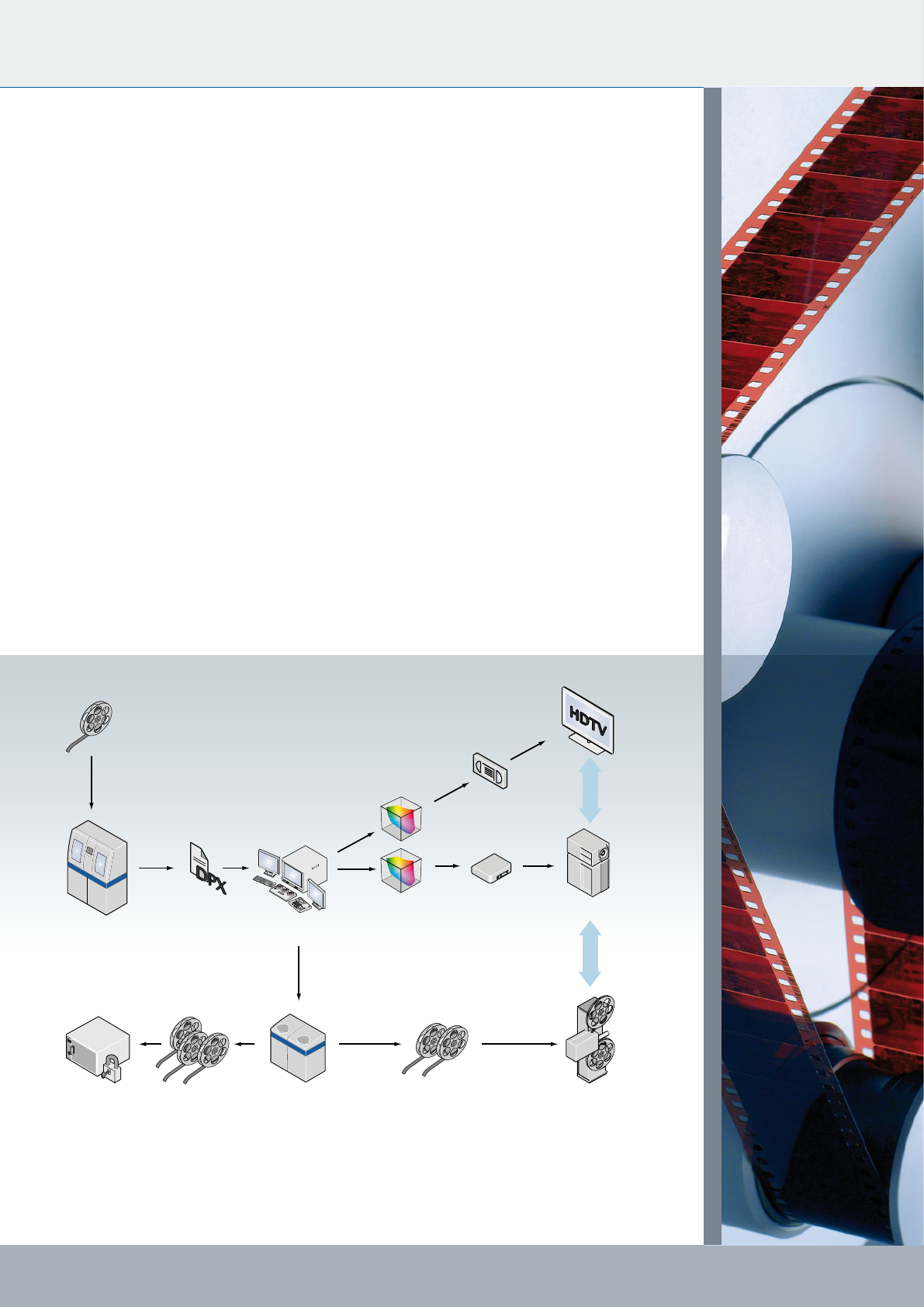
6
H[jehWj_ed7ff$
7HH?I97D
EbZ
Eh_]_dWb9Wc[hW
D[]Wj_l[
kfje*Ah[iebkj_ed
7HH?B7I;H
I[f[hWj_edCWij[hLWkbj Fh_dj
<_bcFhe`[Yj_ed
7HH?9K8; :9F
>:JWf[
:_]_jWbFhe`[Yj_ed
C7J9>C7J9>
Archive & Restoration
Millions of meters of lm are stored in lm archives worldwide. Some material is
in very good condition, but as lm ages it can show signs of becoming damaged,
shrunken and brittle. It is especially for this kind of material that the ARRISCAN has
the option to be operated in various extra gentle lm transport modes.
Mechanical pin registration can be deactivated and the transport speed slowed
down to cope with certain types of damage. The LEDs inside the ARRISCAN are
known as a cold light source so there is no thermal stress on the lm, which is a
crucial requirement when dealing with nitrate lm for example.
The current features at a glance:
n Extra safe lm loading procedure
n Transport speed can be decreased for brittle material
n Controllable lm tension
n Mechanical pins can be retracted for shrunken lm
Restoration application using ARRISCAN data in up to 4K resolution.
For color lmstock:
n corrected image by Kodak Digital ICE + IR information
n severe artefacts are not corrected but indicated in the defect matte


















